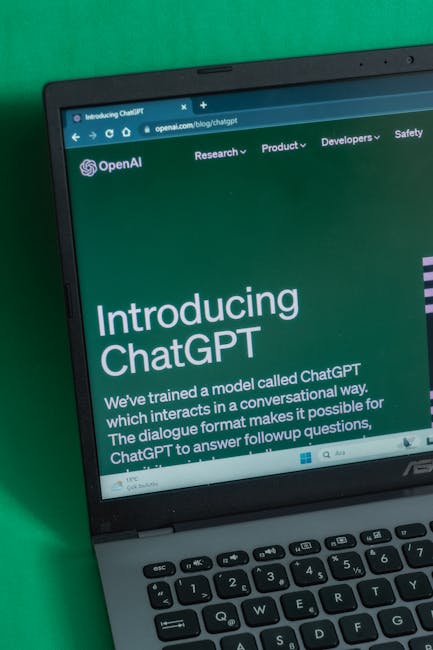ChatGPT Product Updates 2025: Timeline, Features, and Implications
ChatGPT has continued to evolve from a text-generation tool into a multifaceted AI platform for consumers, developers, and enterprises. In 2025, OpenAI introduced a steady stream of product updates—new model variants, expanded developer tools, enhanced enterprise features, and safety-focused changes—while facing scrutiny over content, privacy, and real-world risks. This article synthesizes major launches, product pivots, controversies, and what they mean for organizations and users moving forward.
What is ChatGPT and how has it evolved?
Originally launched as a conversational interface built on large language models (LLMs), ChatGPT has expanded into a platform that blends multimodal models, browser-like search, voice interfaces, agentic tools, and specialized enterprise integrations. Over successive releases, OpenAI has focused on three parallel goals:
- Improving core model capabilities for reasoning, coding, and multimodal inputs;
- Extending product surfaces—mobile apps, browser tools, and APIs—to make AI more actionable; and
- Hardening safety, privacy, and moderation frameworks to reduce harm and meet regulatory expectations.
The result is a shifting product portfolio that includes legacy models (GPT-4 variants), intermediate updates (GPT-4.1, GPT-4o), reasoning-focused releases, and the company’s roadmap toward GPT-5 and agentic systems.
Timeline: Key product updates and model releases in 2025
Below is a concise timeline of the most consequential product updates from 2025, framed to help product managers, developers, and business leaders track changes and plan integrations.
Model and capability updates
- New GPT-5 modes: The GPT-5 series introduced multiple operating modes—”Instant” (warmer, conversational) and “Thinking” (longer-form, persistent reasoning)—plus enhanced tone controls to better match user preference.
- GPT-4.1 and specialized variants: Incremental updates such as GPT-4.1 and other specialized models targeted coding, speed, and cost trade-offs for developers.
- Reasoning and agentic releases: New reasoning-focused models and a family of agent tools (including a Responses API and agent templates) expanded end-to-end automation capabilities like scheduling, research, and content assembly.
Product features and platform extensions
- Apps and SDKs: An Apps SDK and developer previews enabled chat-based apps and deeper integrations with third-party services.
- Browsing and AI-assisted search: An AI browser and improved web-search features offered conversational overviews and the ability to reference multiple sources within a single response.
- Image, audio, and video tools: Image generation and editing moved into the core product, with separate tooling for voice synthesis, speech-to-text, and early video/score-based projects for multimedia creation.
- Advanced Voice and real-time conversation: Voice upgrades made spoken interactions more natural and expanded multilingual support.
Enterprise and education features
- Company knowledge and integrations: Business and Education tiers gained conversational search across Slack, Drive, GitHub, and other internal sources, turning ChatGPT into an enterprise search layer.
- Data sovereignty and regional programs: New regional deployments and compliance programs helped organizations meet local data-residency requirements.
- ChatGPT Gov and security-focused offerings: Government-specific tiers addressed compliance and authorization for non-public data handling.
Why did OpenAI prioritize mixed model modes and agentic tools?
The shift to multi-mode models and agentic tools reflects market demand for AI that can both deliver quick conversational answers and execute complex, multi-step workflows. Businesses want automation that connects to calendars, documents, and codebases; developers want APIs to orchestrate these behaviors. By offering “Instant” and “Thinking” modes and agent templates, the product aims to satisfy both low-latency consumer interactions and high-context enterprise workflows.
How is OpenAI addressing safety, mental health, and legal risks?
As ChatGPT has become more capable, scrutiny has intensified. Key safety responses in 2025 included:
- Updated moderation rules and model behavior policies to restrict harmful outputs and sensitive content.
- Consultations with mental health experts to improve responses to users in crisis and to refine escalation and parental-control features.
- More conservative rollout of high-risk features (e.g., agentic actions or powerful reasoning models) while additional safety testing completes.
- Legal defense and product changes in response to copyright and data-use litigation, influencing training practices and licensing strategies.
These measures underscore a broader industry trend: product teams must pair innovation with robust safety engineering and legal risk assessments.
What does this mean for businesses and developers?
Enterprises and developers should weigh three practical implications:
- Integrations are core: Conversational search and company-knowledge features make ChatGPT a potential central layer for knowledge work—particularly for customer support, sales enablement, and research teams.
- Model choice matters: Selecting between faster, cheaper models and more capable reasoning models will affect costs, latency, and output quality. Budget forecasts should include token usage and potential premium model surcharges.
- Safety and compliance must be baked in: Adopt monitoring, human-in-the-loop review, and retention policies aligned to both vendor guarantees and regulatory expectations.
How have adoption and commercial metrics changed?
Adoption accelerated across consumer, developer, and enterprise segments. The mobile app, web integrations, and the paid subscription tiers drove substantial usage growth and revenue expansion. At the same time, usage patterns reveal that many queries now originate from AI-overview features in search and in-product summaries rather than direct clicks to source sites, changing downstream traffic and discovery dynamics for publishers.
What are the controversies and open questions?
Several unresolved issues remain central to the platform’s future:
- Copyright and dataset transparency: Lawsuits and policy debates about training data sources continue to shape permissible uses and licensing requirements.
- Behavioral safety: Ensuring models do not encourage harmful actions or produce dangerously misleading guidance remains a persistent challenge.
- Economic model: Pricing, revenue forecasts, and the cost of compute infrastructure will determine which features scale commercially and which remain premium.
How to evaluate whether to adopt ChatGPT features now?
Decision-makers should assess maturity across three axes:
- Capability: Does the model reliably solve your use case (support, research, code generation)?
- Compliance: Can you meet data residency, retention, and audit requirements?
- Cost and performance: Does the total cost of ownership (tokens, premium models, integrations) fit your budget?
Photo-realistic and image-editing features can accelerate marketing workflows, while agentic tools can automate routine tasks. For technical teams, new coding agents and the Responses API increase automation potential but require governance and observability to limit downstream risk.
Related coverage and deeper reads
For readers who want tactical guidance and additional context, consider these previous Artificial Intel News analyses:
- ChatGPT Product Updates 2025: Timeline & Key Changes — the foundational timeline and product notes.
- OpenAI Data Centers: US Strategy to Scale AI Infrastructure — analysis of compute and data center strategies that underpin model scaling.
- AI Memory Systems: The Next Frontier for LLMs and Apps — how persistent memory systems will change long-term personalization and agent behavior.
Practical checklist: How teams should prepare
Use this short checklist to convert product signals into action:
- Inventory use cases and data flows that will touch ChatGPT or related models.
- Run pilot integrations on non-sensitive data and measure latency, cost, and failure modes.
- Define safety gates and human review points for high-risk outputs.
- Plan for model updates: version pinning, fallback strategies, and transparency about which model served a request.
Looking ahead: what to watch for in the next 12 months
Key signals to monitor:
- Regulatory actions and legal rulings affecting training data and liability.
- Further differentiation between consumer and enterprise offerings and their pricing tiers.
- Improvements in long-term memory, agent reliability, and explainability features that enable safe automation.
- Infrastructure announcements—new data centers, chip supply changes, and cost efficiencies—that affect latency and pricing.
Final takeaways
ChatGPT’s 2025 product arc shows a platform maturing into an enterprise-grade assistant while wrestling with safety, legal, and operational challenges. Businesses that adopt thoughtfully—prioritizing governance, cost control, and integration fidelity—stand to benefit from substantial productivity gains. At the same time, the broader AI ecosystem will need ongoing dialogue between engineers, legal teams, and policy makers to minimize harm while unlocking value.
Call to action
Want a tailored assessment of how ChatGPT product updates affect your organization? Contact our editorial team for a customized briefing and implementation checklist to help you align strategy, risk, and ROI.





